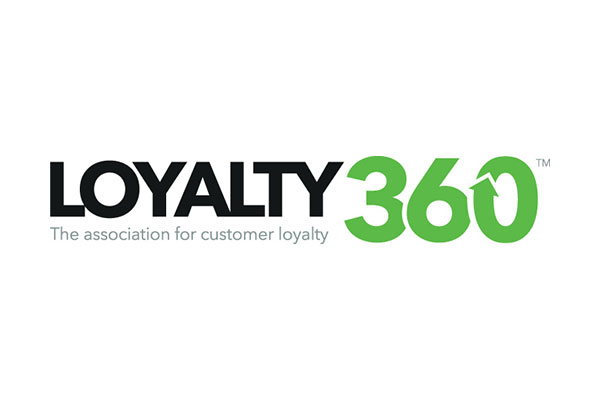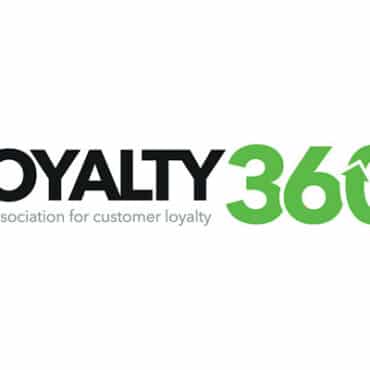[ad_1]
There is a growing trend in customer loyalty programs to deliver more personalization and customized programs, but how important is that customization to the end consumer?
Loyalty360 CEO Mark Johnson spoke with Chief Marketing Officer of Redpoint, John Nash, about these trends and a recent study conducted by Redpoint to determine just that.
Brands today understand the importance of collecting customer data, but creating value out of that data can be a challenge.
Brands need to personalize engagement with their customers by coordinating data analytics and actions for new customer experiences, and then differentiating those experiences to improve loyalty with their customers.
There is a gap in what to do with the data and how to manage it. Businesses don’t know the technology themselves, so there is a need for software companies like Redpoint to help brands decipher that data and determine how best to use it to customize their loyalty programs.
Says John Nash, Chief Marketing Officer, of Redpoint, “How to define the perfect customer experience is predicated on perfect customer data.”
By starting with a single customer view, companies can aggregate the data and attributes in real-time, utilizing machine learning and AI to recommend next best actions based on that data. Taking advantage of that data and those next best actions in the context of the customer’s journey allows companies to drive the most value and the most loyalty, and ultimately drive up revenue.
“We do that in an omnichannel way,” explains Nash. “We keep up with consumers as they are going across all channels, making the journey seamless and taking all the friction out of it.”
Redpoint’s innovative software works in combination with the brand’s existing MarTech stack to keep existing data in place and secure. By overlaying the data, analytics and orchestration, it is a seamless experience.
Research Study Reveals Diverse Consumer Behaviors
Redpoint recently surveyed consumers about their thoughts on brand connection, brand loyalty and personalized loyalty efforts. The results solidified what many companies have been thinking all along: customers want to be treated as individuals.
“We like to survey consumers to make sure we are on top of our game,” says Nash. “How brands are working with their consumers and consumer experiences are always changing, and there is more of an emphasis on loyalty within the growing customer base.”
Given the cost and growing difficulty of customer acquisition, with the rise in costs and removal of third-party cookies, marketers want to grow their customer base even more. The goal of the study was to understand the dynamics and discover the opportunities.
There were two key insights found from the study: personalization is key to brand connection, and that personalization paired with a frictionless experience is fundamental to building lasting relationships.
“But it’s not just doing personalization,” Nash stresses. “It’s doing it in a leading-edge way and standing out with your brand.”
It’s Not Just About Discounts and Perks
While discounts and perks are a staple among loyalty programs, the study found being valued and understood is even more important.
Key findings:
- 74% of consumers believe brand loyalty is about being valued and understood.
- 64% of consumers would rather purchase a product from a brand that knows them.
- 34% of consumers would spend more money on a product from a brand that knows them.
- 49% of consumers are more likely to make a purchase from a brand that does personalization well.
- Nearly one-third of consumers were willing to overlook a bad experience if they feel like a company is trying to understand them as a customer.
Loyalty is Relative
The second major insight from the study revealed that loyalty is relative. Customers are truly loyal to just a small number of brands.
- 65% of consumers profess they love fewer than 3 brands.
- 9% claim to not love even a single brand.
- 40% identify quality goods and services as essential to loving a brand.
- 17% report quality of experience across all channels was the chief requirement to loving a brand.
Consumers want to be understood
Over half of consumers surveyed recognize that offering a relevant product and service recommendation drives loyalty. Making those products and services easily accessible is equally valued.
Another 41% said they felt understood through their frequency of interactions.
Says Nash, “Organizations can thrive in this environment if they deliver timely, relevant and highly personalized information at the right moment.”
Studies Confirm Boomers vs Millennials Gap
Numbers revealed that there is a large gap in the key drivers of engagement between the older and younger generations, with GenX, Millennials and GenZ generally in agreement.
Offering relevant products and services was the number one requirement for brand loyalty universally across all age groups.
Respondents ages 25 to 34 were two times as likely (36%) to cite brands connecting their values to my values as a driver to loyalty than respondents over 65 (18%).
Respondents ages 25 to 34 were three times as likely (19%) to prefer customized messages tailored to them than respondents over 65 (6%). Comparatively so, GenX reported 13% likely and GenZ 30% likely.
Respondents ages 25 to 34 were over twice as likely (39%) to cite understanding how my preferences change and evolving with them as a key driver compared to respondents over 65 (18%).
The inverse occurs when measuring value for discounts.
Respondents over 65 were three times more likely (43%) to prefer discounts as a key driver as compared to respondents 25 to 34 (14%). Similar deltas were recorded for GenX (28%) compared to GenZ (15%).
Personalization is Imperative for Successful Customer Loyalty
Now more than ever, companies are finding a need to incorporate personalization and customization into their customer loyalty programs, and having the right technology to empower them is crucial to that success.
Nash stresses the importance of closing the gaps between customer expectation and execution. “You can be customer-centric and you can shift investments to address these gaps and get results.”
Studies show that 42% of a company’s MarTech stack is underutilized.
Says Nash, “We’ve left a lot of data on the cutting room floor and it’s critical to get all this behavioral data to match identities and close those data gaps When we do that, we can drive double or even triple digits in revenue and double-digit decrease in interaction costs.”
The best way to implement that is to take an incremental approach. Brands cannot afford to wait, but it does not always make sense to go full steam ahead. Nash recommends working incrementally with a long-term vision in mind, saying, “Increment your way to value.”
Brands should gather all the data, but start with data that is most valuable.
“You can’t hope to create the personalization level you want without having that deep understanding,” says Nash. “I advocate getting started there. First, make sure your data is in shape, but also utilize machine learning and AI with segmentation to view the customer base in a more dynamic and granular way. Then begin to add next best actions and more complex models over time.”
It is imperative for brands to orchestrate next best actions in real-time. According to Nash, customer journeys are increasing across channels in real-time, so brands need to get the real-time basis in place so that no matter where the customer is, the brand can orchestrate next best action for them. “You can’t have data that’s seven days behind or even 24 hours behind the customer journey – it has to be real-time today.”
A Shift in Mindset Can Increase Efficacy of Personalization Efforts
One of the best ways brands can increase the efficacy of their personalization efforts is to evaluate and shift their mindset. Brands need to be entrepreneurial, competitive, idealistic and serve people individually at that same time. Nash says, “We can all be that. We are in a fiercely competitive market, and consumers are picking winners based on the level of personalization offered.”
Brands can drive revenue up and costs down on an individual basis. The technology exists to accomplish this at scale digitally and physically. Optimization and personalization for loyalty programs is a necessary shift in priorities from customer acquisition, which is getting more difficult and more costly.
“There will come a time when machine learning can do this in real-time,” Nash says. “It will take in new data in consumer behavior in real-time and deliver your business objectives.”
[ad_2]
Source link




